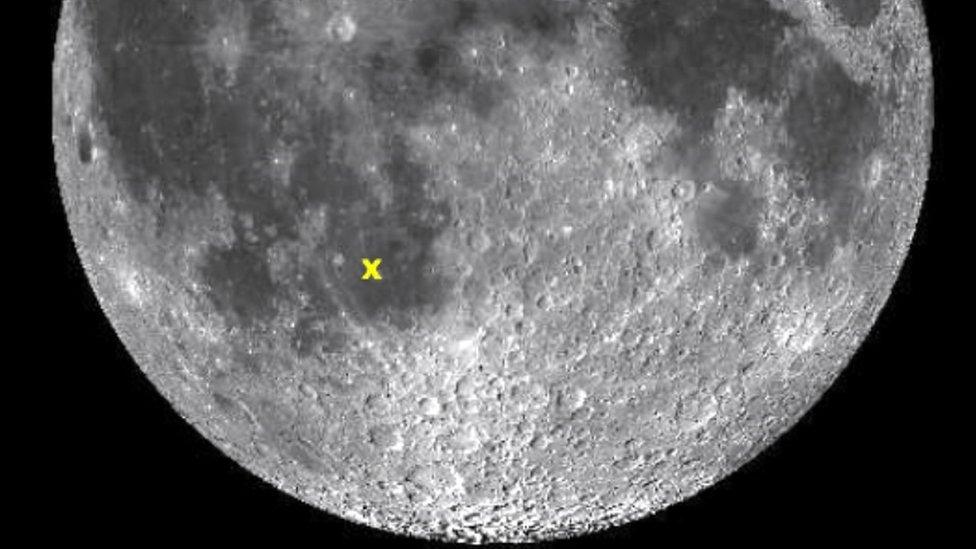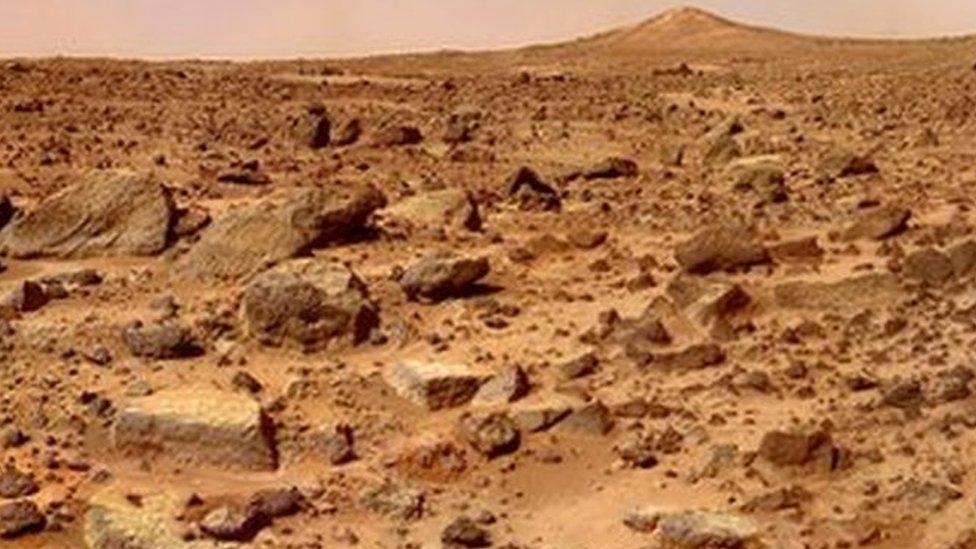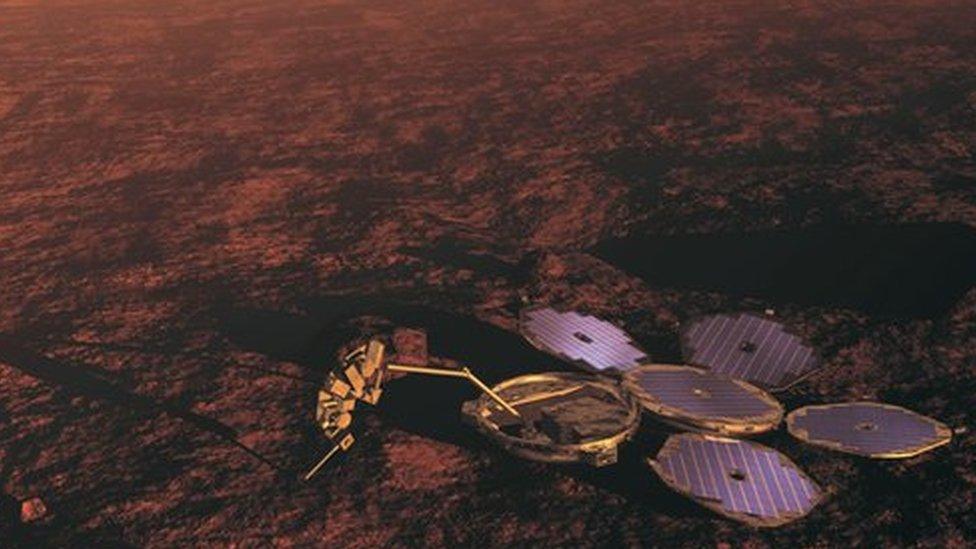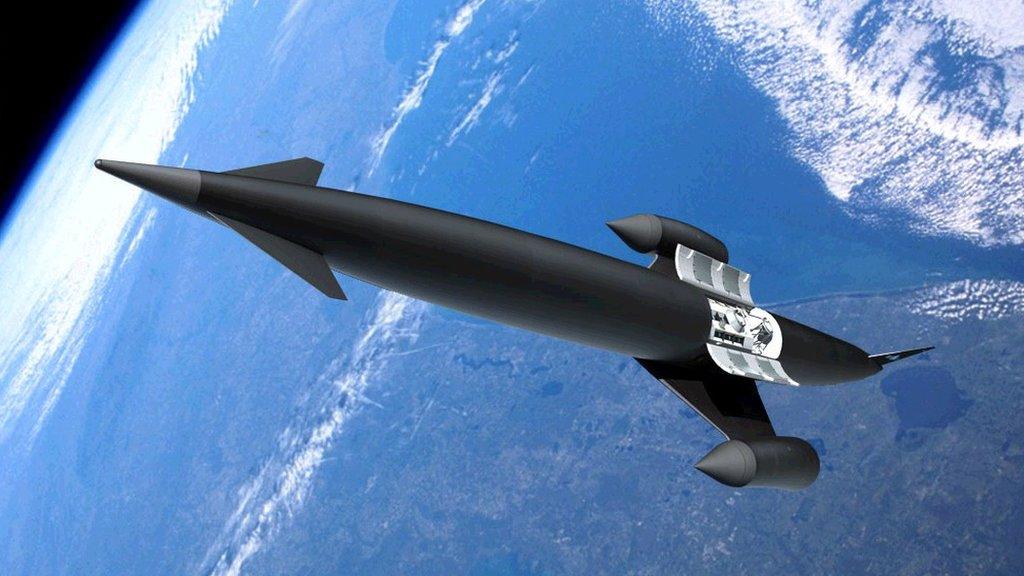Sighting of meteorite's moon hit by Aberystwyth scientists
- Published

The site of the Lunar Impact Flash
Space scientists in Aberystwyth believe they have captured the first confirmed UK sighting of a meteorite hitting the Moon.
The image was taken on New Year's Day from a remotely operated telescope at Aberystwyth University.
The lunar impact flash - an explosion of light caused by something hitting the Moon's surface - was corroborated by a team of Italian astronomers.
Dr Tony Cook said the flashes were "notoriously difficult to record".
Dr Cook, who captured the image, said: "The meteorite would be travelling at anywhere between 10 to 70km (6 to 43miles) per second as it hit the surface of the Moon.
"That is the equivalent of travelling from Aberystwyth to Cardiff in just a few seconds, and the resulting impact would be over in a fraction of a second."

Dr Cook hopes research into the surface of the Moon could prove invaluable should humans decide to colonise it
It was recorded on the southern hemisphere of the Moon and scientists believe it was probably caused by a small meteorite the size of a golf ball hitting the surface.
The first confirmed recordings of lunar impact flashes were by amateur astronomers in the United States during the Leonid meteor shower of November 1999.
"A similar meteorite hitting the Earth's atmosphere would produce a beautiful shooting star, but as the Moon has no atmosphere it slams into the surface, causing a crater the size of very large pot hole," Dr Cook added.
"Just under 1% of the meteorite's energy is converted into a flash of light, which we were able to record here in Aberystwyth."
- Published1 December 2016

- Published11 November 2016

- Published16 July 2014
